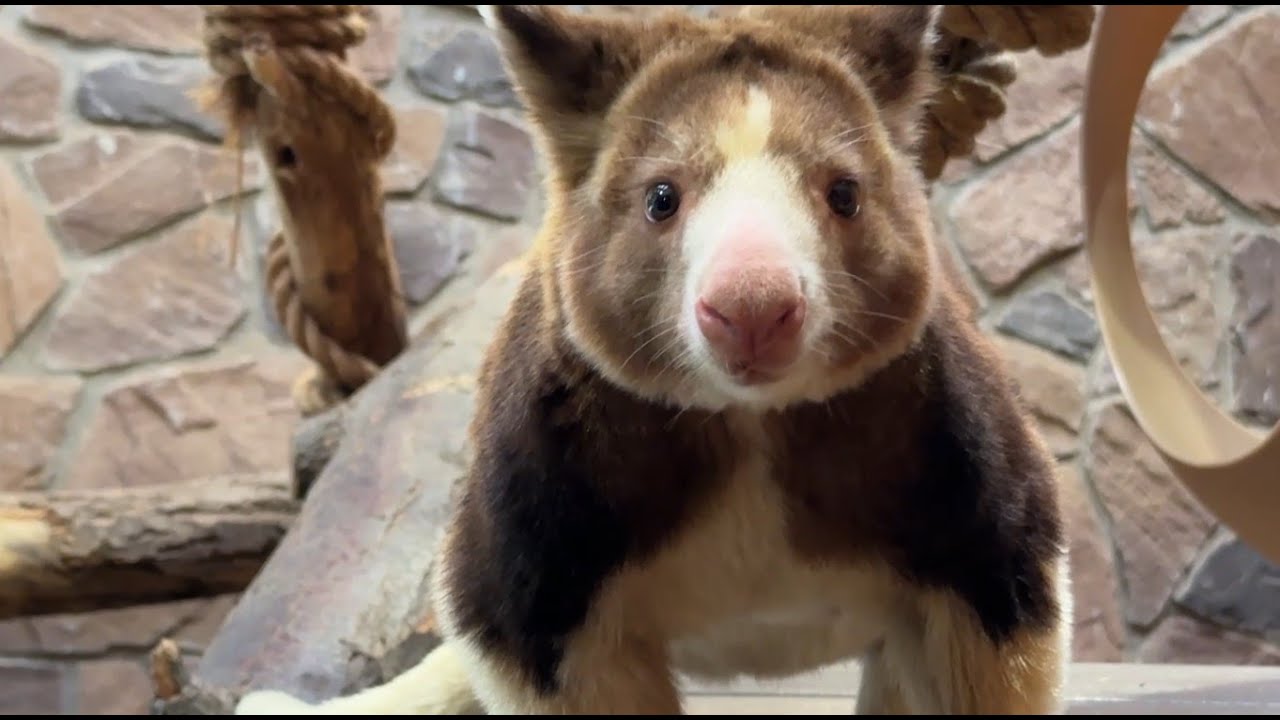– The significance of World Tree Kangaroo Day in promoting wildlife conservation and public awareness
– An overview of tree kangaroo species and their unique adaptations for an arboreal lifestyle
– Challenges and threats faced by tree kangaroos in the wild, focusing on habitat loss and hunting
– The role of zoos in tree kangaroo conservation, including captive breeding programs and educational outreach
– Prospects for tree kangaroo conservation and how individuals can contribute to these efforts
World Tree Kangaroo Day emerges as a pivotal event in the wildlife conservation calendar, offering an annual opportunity to spotlight one of nature’s most fascinating yet imperiled marsupials. As we embrace the educational potential of this day, our attention centers on the tree kangaroos—an extraordinary genus of kangaroos adapted for life in forest canopies. This piece will immerse you in the biological marvels of these creatures, the conservation hurdles they face, the indispensable role of zoos in their preservation, and the continually evolving strategies that aim to secure a future for tree kangaroos.
Tree kangaroos reside primarily in the rainforests of Australia’s Cape York Peninsula, West Papua, and Papua New Guinea. Exhibiting a suite of remarkable adaptations, they are as adept in the trees as their terrestrial counterparts are on the ground. These adaptations include robust forelimbs, a strong tail for balance, and hind limbs capable of moving independently—a stark contrast to the synchronous movement typical of ground-dwelling kangaroos. Further, their curved claws and cushioned footpads enable them to grasp branches and maneuver deftly through their aerial habitat.
While they are a captivating subject for study and display an impressive array of biological adaptations, tree kangaroos confront daunting challenges. Habitat destruction, driven by deforestation for timber extraction and agricultural expansion, is their greatest threat. With trees disappearing, tree kangaroos lose not only their homes but their food sources as well. Additional pressures from hunting for sustenance and trade have compounded their predicament, making the conservation efforts surrounding World Tree Kangaroo Day all the more urgent.
Zoos play a critical role in conserving tree kangaroos, particularly through managed breeding programs known as Species Survival Plans (SSPs). These programs strive to maintain genetically diverse and demographically stable populations in captivity, which can serve as an insurance policy against extinction in the wild. Through careful management and cooperation among zoos, tree kangaroos born in captivity, such as Goodfellow’s and Matschie’s tree kangaroos, can be introduced to their natural environment, bolstering wild populations. Additionally, zoos offer a platform for education and outreach, which is vital for fostering public interest and support for tree kangaroo conservation efforts.
The prospects for tree kangaroo conservation hinge on a synergistic approach that includes habitat protection, research, local community engagement, and international cooperation. Integrating traditional knowledge with contemporary science forms a powerful alliance in the fight to preserve these animals. Campaigns on World Tree Kangaroo Day amplify this message, driving home the importance of ecological balance and the irreplaceable nature of biodiversity.
Individuals can have a palpable impact on tree kangaroo conservation by supporting organizations that protect rainforests, reduce the demand for unsustainable palm oil, and promote ethical ecotourism. Consumer choices, advocacy, and raising awareness through social media are actionable ways people can stand in solidarity with conservationists striving to protect the habitat and future of tree kangaroos.
Celebrating World Tree Kangaroo Day isn’t about a single day on the calendar; it’s about galvanizing a global movement. We collectively construct a safety net around these arboreal marsupials as we gather information, participate in zoo-led initiatives, and advocate for policy changes. This dedicated day allows us to illuminate their plight and galvanize the action necessary to ensure tree kangaroos continue to leap through the treetops for generations to come.
*****
Source Description
World Tree Kangaroo Day is Tues., May 21, and we have an exciting day of activities planned in Australia Walkabout to help raise awareness for tree kangaroo conservation.
Only about 2,500 Matschie’s tree kangaroos remain in the wild in their only known habitat: The Huon Peninsula of northeastern Papua New Guinea. Threatened by logging and mining exploration, the marsupial arboreal species is considered endangered by the International Union for Conservation of Nature (IUCN).
At CMZoo, we support the Matschie’s Tree Kangaroo Species Survival Plan (SSP) by providing a home and care for tree kangaroos that don’t have current breeding recommendations, like Som. While Som receives quality care, she’s also contributing to the conservation of her species by inspiring and educating guests.
Check out some of the fun activities we have planned for World Tree Kangaroo Day!
— From 10 a.m. to 2 p.m., join us for family activities in Scutes Family Gallery:
– Coloring pages
– Paper masks
– Button making
– Simulated pouch peek activity (find an imitation tree kangaroo joey in a pouch replica)
– “Walk like a tree kangaroo” activity
— 11 a.m. keeper talk at the Matschie’s tree kangaroo exhibit in Australia Walkabout.
— 1 p.m. puppet show in Safari Cabin (near the entrance to the Sky Ride).
This event and all activities are included in the price of your daytime admission to CMZoo. Please note: advance tickets to the Zoo are required for members and the general public, and some days may sell out. Get tickets at cmzoo.org.

